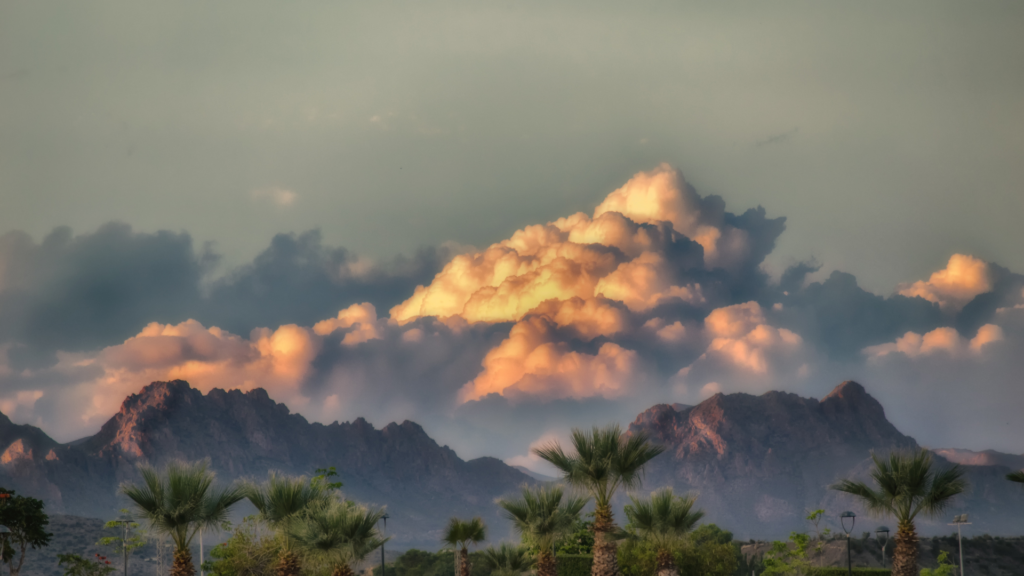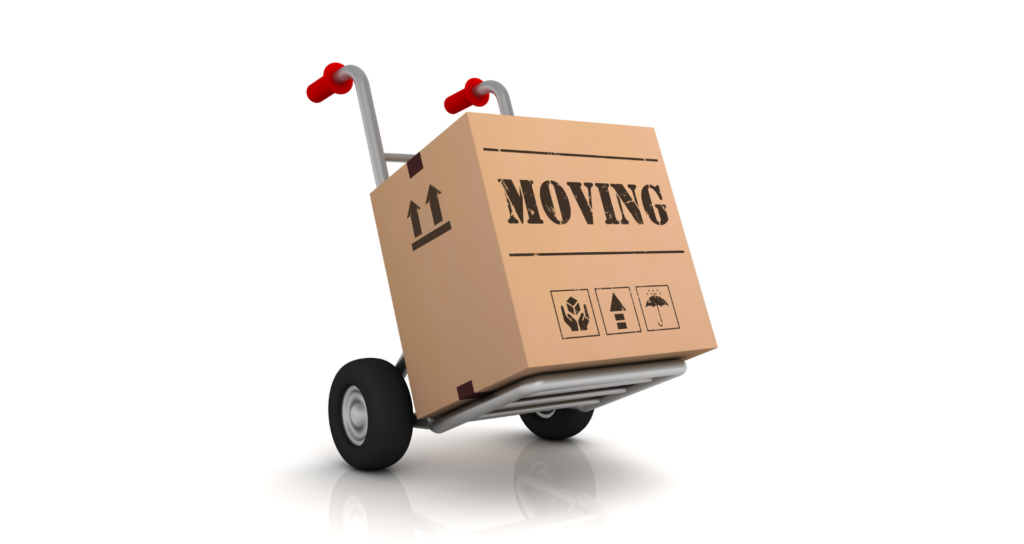Moving to a new state is always a significant life decision, and when that state is Arizona, it comes with unique challenges and opportunities. Arizona, with its desert landscapes, vibrant cities, and a booming economy, attracts individuals and families looking for a fresh start. Whether you’re relocating for work, education, or personal reasons, driving plays a central role in your move. In this blog, we’ll explore everything you need to know about moving to Arizona and discuss the nuances of driving in the state.
At Ace Interstate Moving, we understand how overwhelming a long-distance move can be. That’s why we provide a list of top-rated moving companies in your area to make your move smoother. If you’re planning to relocate to Arizona, we’re here to help you find the right moving company and navigate all aspects of your relocation. Now, let’s dive into what it’s like to move and drive in Arizona.
Why People Are Moving to Arizona
Before we dive into the specifics of driving in Arizona, it’s important to understand why so many people are choosing to relocate to this beautiful state. Arizona has become one of the top destinations for relocation in the United States due to various factors. Compared to many other major states, housing costs in Arizona tend to be more affordable. Cities like Phoenix, Tucson, and Scottsdale offer a range of housing options, from suburban neighborhoods to downtown lofts.

- Economic Opportunities: Arizona boasts a growing economy, with sectors such as technology, healthcare, and real estate booming. The state’s low taxes also appeal to entrepreneurs and businesses.
- Sunny Weather: Arizona is known for its sunshine, making it an ideal place for those who love the outdoors. The warm weather allows for year-round activities like hiking, golf, and exploring the state’s national parks.
- Lifestyle and Recreation: From the majestic Grand Canyon to the vibrant city life in Phoenix, Arizona offers plenty of recreational activities. The state’s diverse landscape, from deserts to forests, makes it an outdoor enthusiast’s paradise.
Preparing for Your Move to Arizona
Once you’ve decided to make the move to Arizona, preparation is key. You need to plan ahead for your relocation, and one crucial aspect of this process is finding a reliable moving company. At Ace Interstate Moving, we provide a platform that helps you find the best-rated moving companies in your area. Whether you need professional packing services, transportation, or storage, we’ve got you covered.
Now, let’s focus on an essential part of your move—driving in Arizona.
Driving in Arizona: What You Should Know
Driving in Arizona is essential for navigating the vast landscapes and experiencing all the unique features this southwestern state has to offer. Whether you’re commuting within cities like Phoenix, enjoying a scenic drive through the desert, or exploring the mountainous regions, understanding the local driving conditions is key to ensuring a safe and smooth journey. In this section, we’ll expand on the crucial driving factors in Arizona, particularly for new residents planning a move to this dynamic state.
1. The Landscape and Roads in Arizona
Urban Areas:
Living in Arizona’s bustling urban areas like Phoenix and Tucson means you’re dealing with fast-paced traffic, especially during rush hours. These cities are well-equipped with an extensive network of highways, roads, and streets. Phoenix, the fifth-largest city in the U.S., is particularly known for its sprawling metropolitan layout. As a result, traffic congestion can be common, and it’s not unusual to see slow-moving vehicles on major freeways like Interstate 10 or Loop 101 during peak hours. For those unfamiliar with the area, planning your routes in advance using GPS apps or avoiding highways during high-traffic times can save you significant travel time.
Rural Areas:
If you’re moving to Arizona’s rural regions, you’ll experience quieter, scenic roads that can be a welcome break from city congestion. Areas such as the northern part of the state, around Flagstaff or Prescott, offer tranquil landscapes, but with less infrastructure. The rural roads often stretch for miles without access to gas stations, restaurants, or other services. If you’re planning a long drive in these areas, always ensure that your vehicle is fully fueled, and carry enough water and supplies to avoid getting stranded. One of the unique aspects of driving in rural Arizona is the open space and panoramic views, which make long drives more pleasant despite the limited roadside services.
Desert Driving Moving to Arizona:
Desert Driving:
Arizona’s desert regions, including areas around Phoenix, Tucson, and Yuma, are known for their intense heat, especially during summer months. Driving through these desert expanses requires special considerations to ensure both your safety and the health of your vehicle. The extreme heat can cause issues like tire blowouts or engine overheating, so it’s important to check your vehicle’s cooling system, tire pressure, and fluid levels before embarking on long trips. If you’re traveling in a rural desert area, ensure your car has a full tank of gas as gas stations can be few and far between. Always bring plenty of water with you to stay hydrated, as temperatures can soar to dangerous levels.
Navigating Narrow and Winding Roads:
In addition to expansive highways, Arizona is home to some narrow, winding mountain roads, especially in places like the Mogollon Rim or around areas like Sedona. These roads can present challenges when driving, particularly during winter months when icy patches can form. It’s important to slow down and be extra cautious when navigating these winding routes, particularly if your car isn’t equipped with proper tires for such conditions. Be aware of sharp curves, changing weather conditions, and the occasional wildlife crossing the road.
2. Arizona Weather and Its Impact on Driving
Summer Heat and Its Effects:
Arizona summers are notorious for their high temperatures, and it’s important to understand how extreme heat can impact driving. The dry desert air can affect both your car’s internal systems and your personal well-being. Overheating is one of the top concerns when driving in Arizona during the summer. The intense heat can lead to engine malfunctions, and tires can suffer from high temperatures, causing blowouts or loss of traction on the road. To mitigate this risk, keep your car’s air conditioning and cooling systems in optimal condition. Ensure your tires are properly inflated, as underinflated tires are more prone to failure in hot weather.
Monsoon Season and the Challenges It Brings:
Arizona’s monsoon season, which occurs between June and September, is an integral part of the state’s weather patterns. The arrival of strong thunderstorms, torrential rainfall, dust storms, and sometimes hail can dramatically reduce visibility and create hazardous driving conditions. During these monsoon rains, the roads can quickly become slippery, and flash flooding is a significant risk. It’s crucial to drive with extreme caution during these months. If you’re driving during a dust storm or heavy rainfall, reduce your speed, maintain a safe distance from other vehicles, and be prepared for the possibility of sudden flooding on roads.

Winter Conditions in Northern Arizona:
If you’re moving to or through northern Arizona, such as areas around Flagstaff, be prepared for cold temperatures and snow. These regions often experience snowstorms and icy roads from November to March. It’s essential to equip your vehicle with snow tires if you’re traveling during these months. When driving in snowy or icy conditions, always reduce your speed and increase the distance between your car and other vehicles to avoid accidents. Check weather reports regularly and avoid unnecessary travel during winter storms to minimize risk.
3. Navigating Arizona’s Highways
Interstate Highways:
Arizona’s interstates, such as Interstate 10 (I-10) and Interstate 17 (I-17), are the backbone of travel in the state, connecting major cities and towns. I-10 runs east to west, from California to New Mexico, while I-17 connects Phoenix to Flagstaff. While these highways are generally well-maintained, they can experience congestion, particularly in and around larger cities. Be aware of construction zones, especially during the summer, as Arizona sees an increase in roadwork projects aimed at expanding and improving infrastructure.
Moving to Arizona
Rural Highways:
Traveling on Arizona’s rural highways offers more isolated, peaceful drives, but these routes can be challenging for those unfamiliar with them. While the roads are typically open and less congested, some highways may be prone to sudden changes in weather conditions. Long stretches of road between towns with few services mean it’s critical to be well-prepared. Always carry extra fuel, food, and water, and make sure your vehicle is in good working order.
Speed Limits and Flexibility:
Arizona is known for some of the highest speed limits in the U.S., especially in rural areas where limits can reach up to 75 mph. However, it’s important to adjust your driving speed based on road and weather conditions, not just the posted speed limit. For example, on winding mountain roads or during monsoon rains, slower speeds are recommended even if the posted limit is higher. Always adhere to traffic signs and adjust your driving habits to ensure safety.
4. Traffic Laws and Driving Tips Moving to Arizona
Seatbelt Laws:
Arizona’s seatbelt laws are strict, and every passenger, regardless of their seat position, must be wearing a seatbelt. These laws are enforced rigorously, with hefty fines for violations. Make sure everyone in the car is properly restrained before hitting the road.
HOV Lanes:
In urban areas like Phoenix, High Occupancy Vehicle (HOV) lanes are designated for vehicles with two or more passengers. These lanes can significantly reduce travel time, but be aware of the requirements and make sure your vehicle is eligible to use them. Violating HOV lane rules can result in fines, so it’s crucial to follow the signage carefully.
DUI Laws:
Arizona has some of the strictest DUI laws in the country. The legal limit for blood alcohol content (BAC) is 0.08%, but for drivers under 21, the limit is 0.00%. Arizona’s zero-tolerance policy means any detectable alcohol in a minor’s system could result in a DUI. If you’re drinking, always plan for an alternative method of transportation, such as a designated driver or rideshare services.
Red Light Cameras:
Many cities in Arizona, including Phoenix and Tucson, have red-light cameras installed at major intersections. These cameras capture drivers who run red lights and automatically issue citations. It’s important to come to a complete stop when the light turns red, as running red lights in Arizona can lead to fines and other penalties.
5. Unique Driving Challenges in Arizona
Dust Storms:
Dust storms, or “haboobs,” are a common occurrence in Arizona, particularly during the monsoon season. These storms can roll in unexpectedly, reducing visibility to near zero. If you find yourself in the middle of a dust storm, pull off the road and stop in a safe location. Turn off your headlights and stay in the vehicle until the storm passes. It’s essential to keep calm and wait until conditions improve rather than attempting to drive through the storm.
Wildlife on the Road:
Arizona’s diverse wildlife, including deer, javelinas, and coyotes, can unexpectedly cross your path, especially in rural and less populated areas. While these encounters are rare, always stay vigilant, especially at dawn or dusk when animals are most active. If you encounter wildlife on the road, slow down and be prepared to stop. It’s better to be cautious than risk an accident.
Long-Distance Travel:
Arizona’s vastness can require long trips to reach neighboring cities or attractions. For instance, traveling from Phoenix to Tucson or Flagstaff involves hours of driving on highways with limited service stops. Always plan ahead and ensure your car is in good working order before embarking on long-distance trips. Having emergency supplies such as water, snacks, a flashlight, and a first aid kit can be lifesavers in case you experience car trouble or delays.
How Ace Interstate Moving Can Help You Move to Arizona
Relocating to a state like Arizona can feel overwhelming, especially when considering the various logistics involved. Fortunately, Ace Interstate Moving, as a moving company rating platform, is here to help streamline your entire moving process. Although we aren’t a moving company ourselves, we provide you with access to a curated list of top-rated, trusted moving companies that specialize in long-distance relocations. This allows you to make an informed decision when choosing the best moving company to handle your Arizona move.

Here’s how Ace Interstate Moving makes your transition to Arizona smoother:
Trusted, Reliable Recommendations:
With countless moving companies out there, it can be difficult to know which one is trustworthy. That’s where we come in. We’ve compiled a list of the most reputable moving companies. All of which have been carefully vetted based on customer reviews, reputation, and service offerings. By using our platform, you can quickly find a company that aligns with your moving needs. Ensuring peace of mind during your relocation.
- Wide Range of Services: Whether you’re moving from another state or across the country, our listed moving companies offer a variety of services to make your Arizona relocation stress-free. From packing and unpacking to temporary storage solutions, you can find a full-service moving company that provides exactly what you need for your move to Arizona. If you need help with oversized furniture, fragile items. Or specific timelines, we ensure that the companies we recommend can accommodate these needs.
- Expert Advice for Arizona-Specific Needs: Arizona’s climate, road conditions, and unique geographical features can present challenges during your move. Our platform offers valuable insights into moving in Arizona, ensuring the moving companies we recommend are equipped to handle these specific conditions. Whether it’s ensuring your movers are experienced in desert heat or dealing with rural areas where services may be sparse. We connect you with movers who are prepared for the task.
By choosing a trusted moving company through Ace Interstate Moving, you can focus on other aspects of your Arizona relocation, knowing that your move will be handled by a reliable. Professional team. Moving to Arizona doesn’t have to be overwhelming—let Ace Interstate Moving make the process seamless and stress-free for you.
Conclusion: Driving in Arizona During Your Move
Relocating to Arizona comes with many benefits, from affordable living to a beautiful, sunny climate. However, when you move, one of the most significant factors to consider is how to navigate the state’s roads. Whether you’re moving to one of Arizona’s bustling cities or its quieter rural areas, it’s essential to be prepared for various driving conditions.
At Ace Interstate Moving, we understand the complexities of relocating, and we’re here to help. As a moving company rating platform, we provide a list of top-rated moving companies to ensure your move is as smooth as possible. We know that moving to Arizona is an exciting adventure, and we want to help make it as stress-free as possible, especially when it comes to driving and getting around the state.
So, as you prepare for your move, take the time to plan your route, ensure your car is in good condition, and familiarize yourself with Arizona’s roads and traffic laws. With the right preparation, you’ll be ready to take on your new life in the Grand Canyon State!




